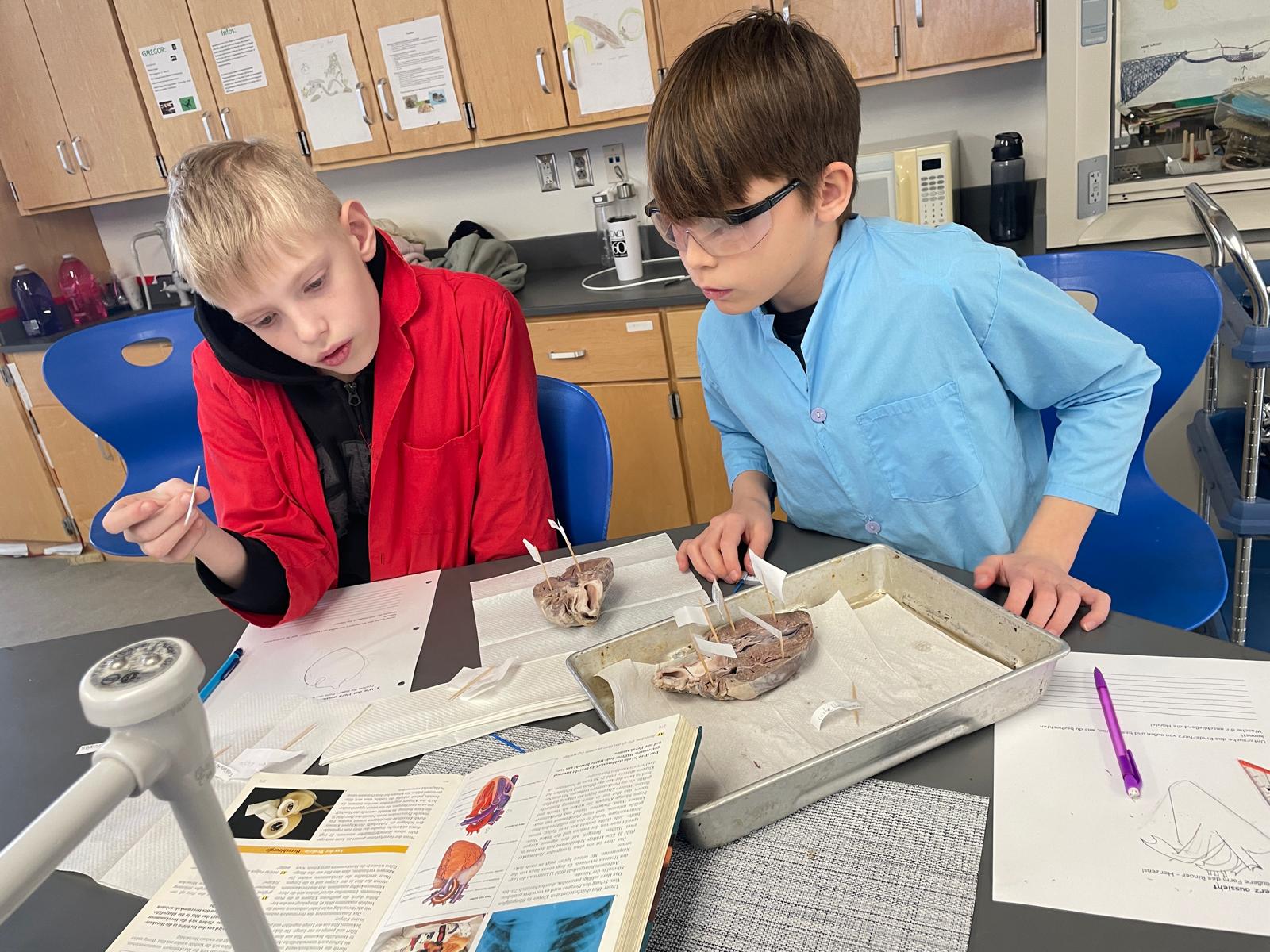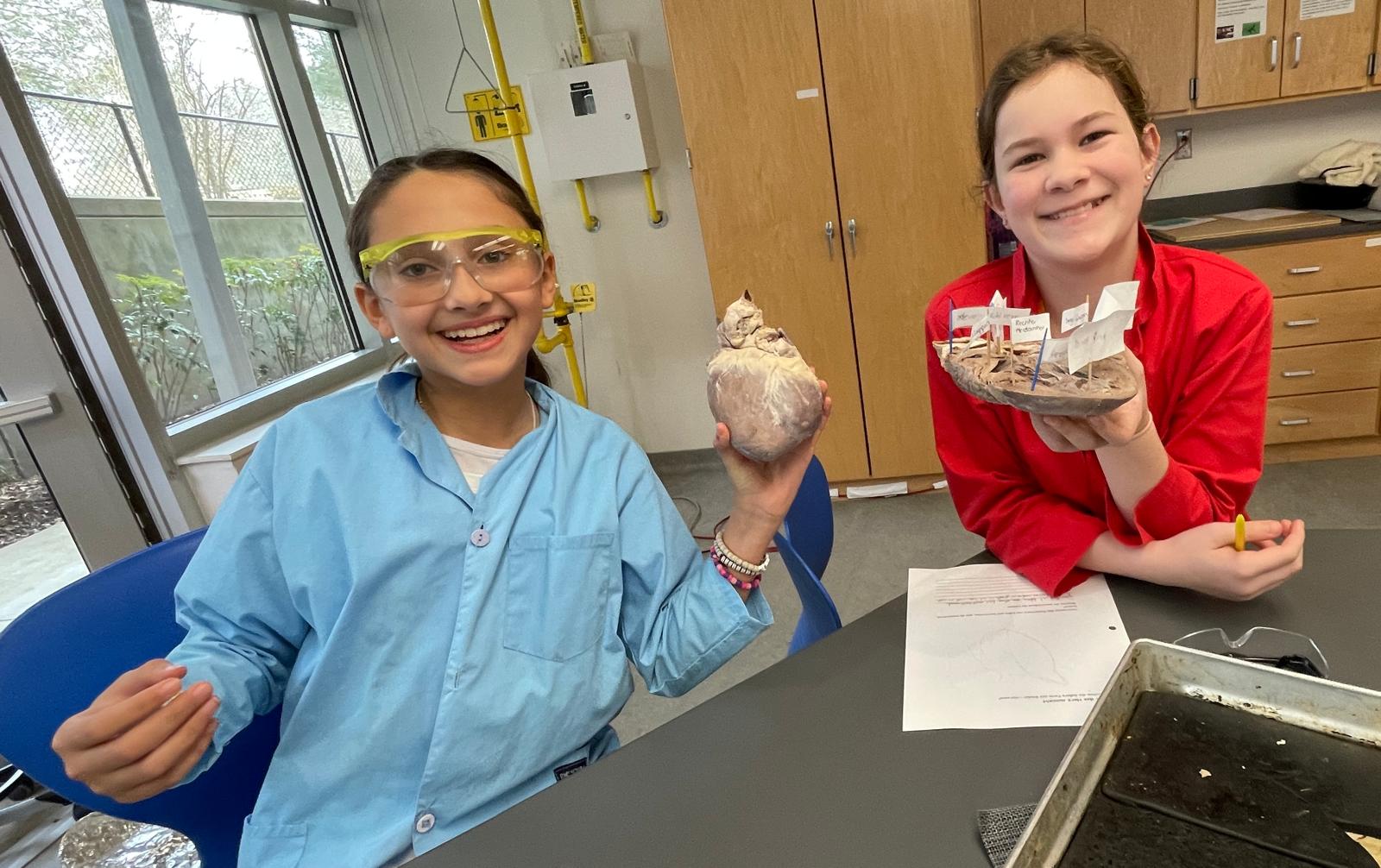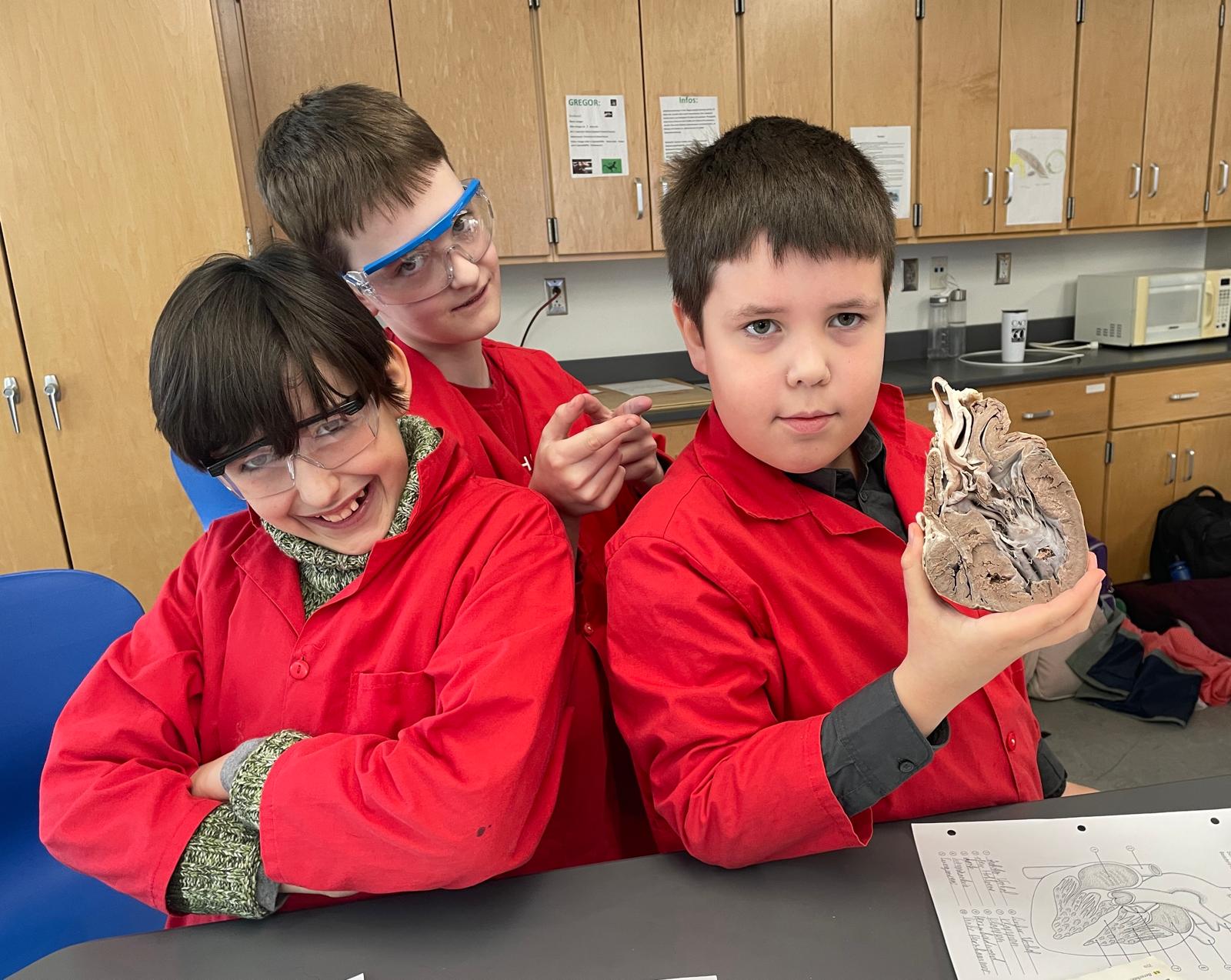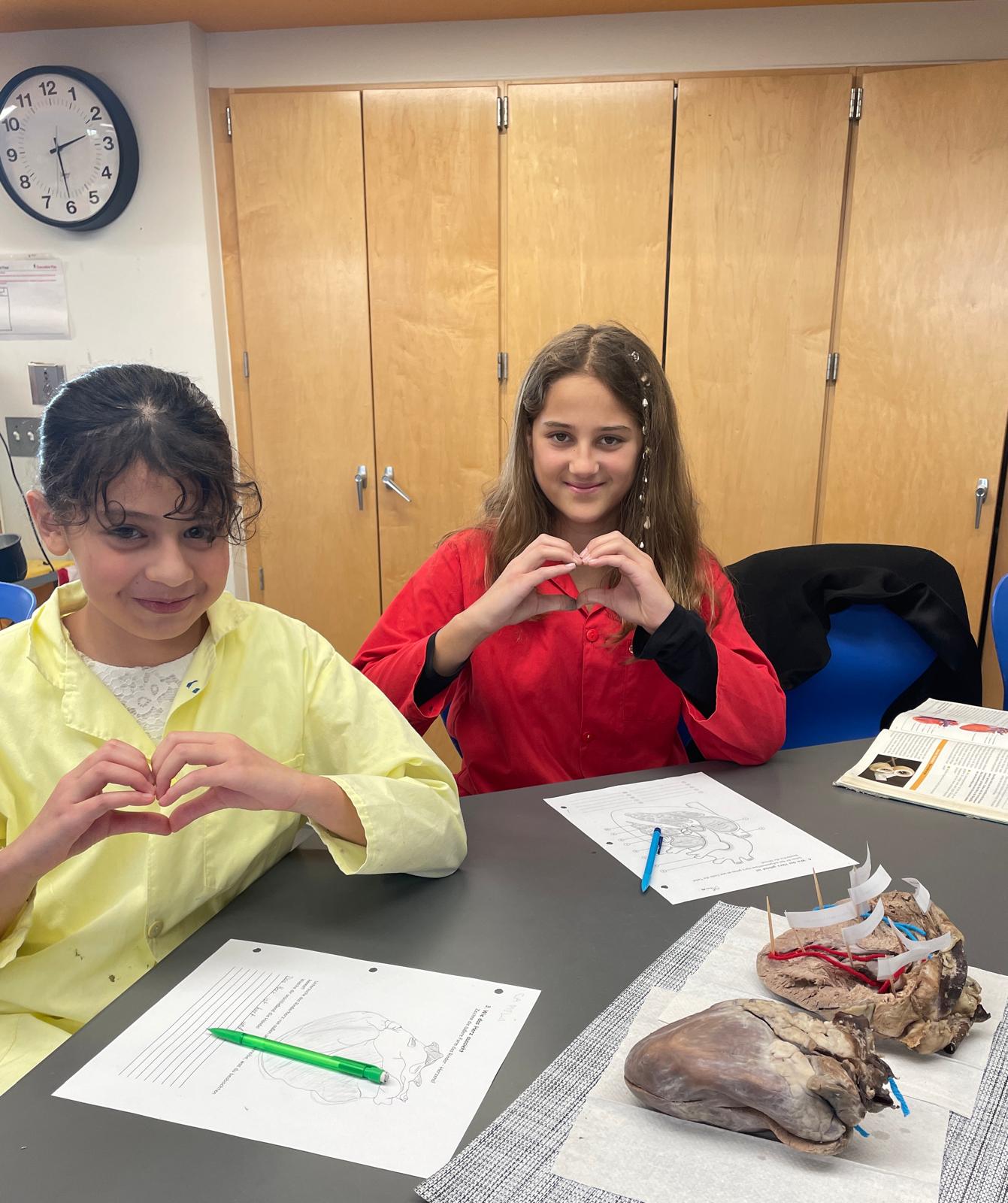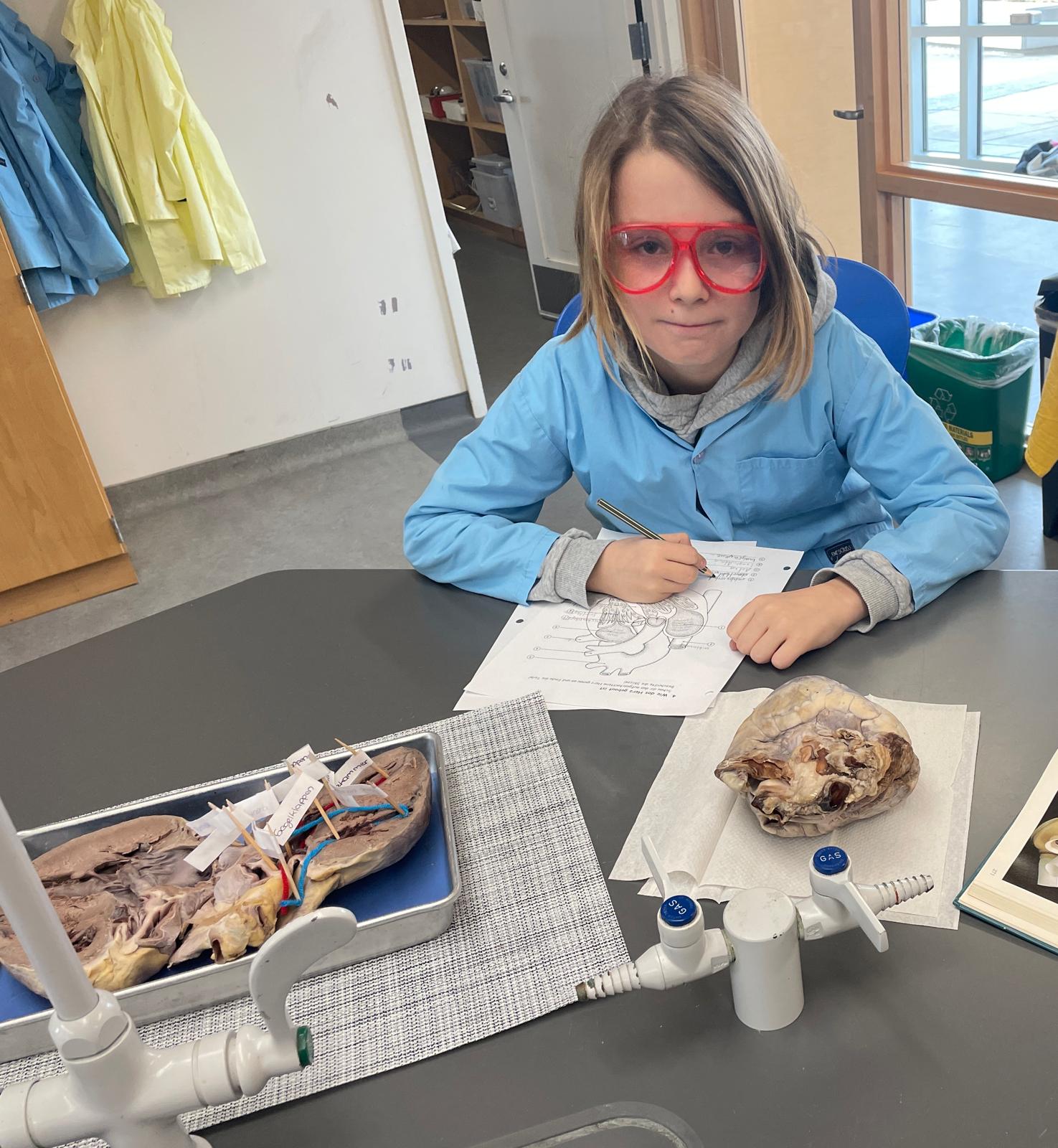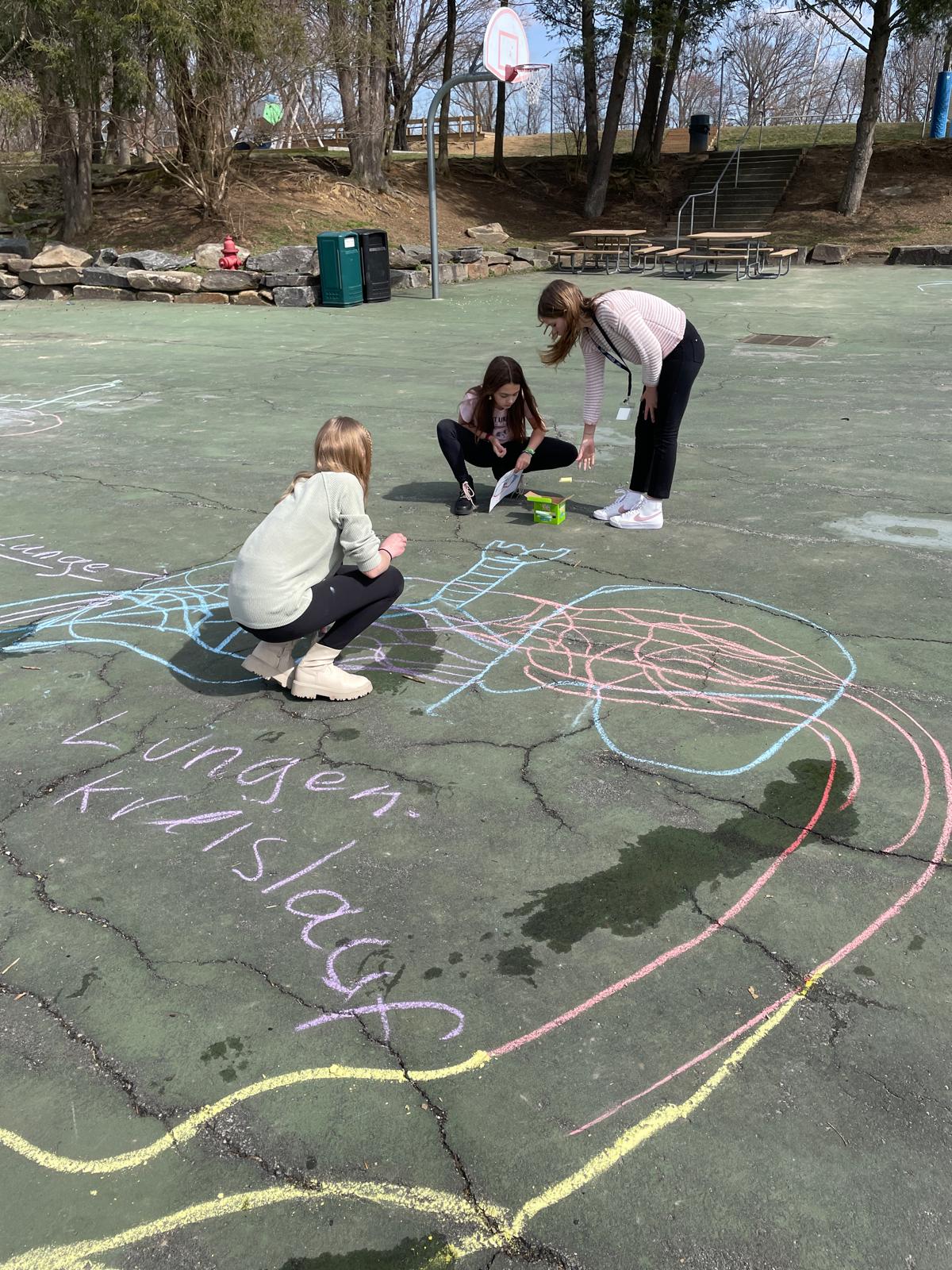STEM - A Heartfelt Lesson
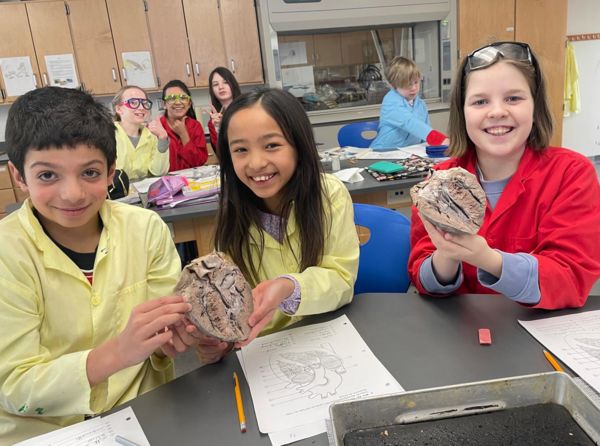
If we didn't want to do that, there was an extra table with artificial models, so we had a choice. We all wore gowns and those who wanted were given gloves. Ms. Colopy told us that the hearts were treated with a preparation fluid, the smell of which is sometimes unpleasant, so some children put on protective goggles after a while. There were different hearts: some were normal, some were already cut open and some were already labeled with flags by older students. This is how we learned the structure of the heart. Then we sketched an image of the heart of a cow. It was a very interesting and fun lesson. What we liked most was when everyone touched the hearts and made a disgusted face at first. But then it wasn't so bad. The hearts felt different than we had imagined, more dry than slippery and instead of red they looked brown.
At the end, we cleaned up the tables and washed our hands. Then we were given a craft homework assignment. We were allowed to make a heart model out of paper, which we will need for the next few lessons to learn about the function of the heart and blood circulation in detail.
Thank you for reading our report on the Heart Lesson, and we hope you have a great day.
by Judith H. and Carolina B. (5b)
I learned a lot of things about the heart in my science lessons, for example where the right atrium is. I was also very fascinated by what a heart looks like - quite gray and with a funny smell. We labeled some of the hearts ourselves.
Later, we used stethoscopes to find out how often a heart beats. Mine beats 76 times a minute.
by Oscar B. (5a)

